This article is part of the Under the Lens series
Not Just Ramps—Disability and Housing Justice
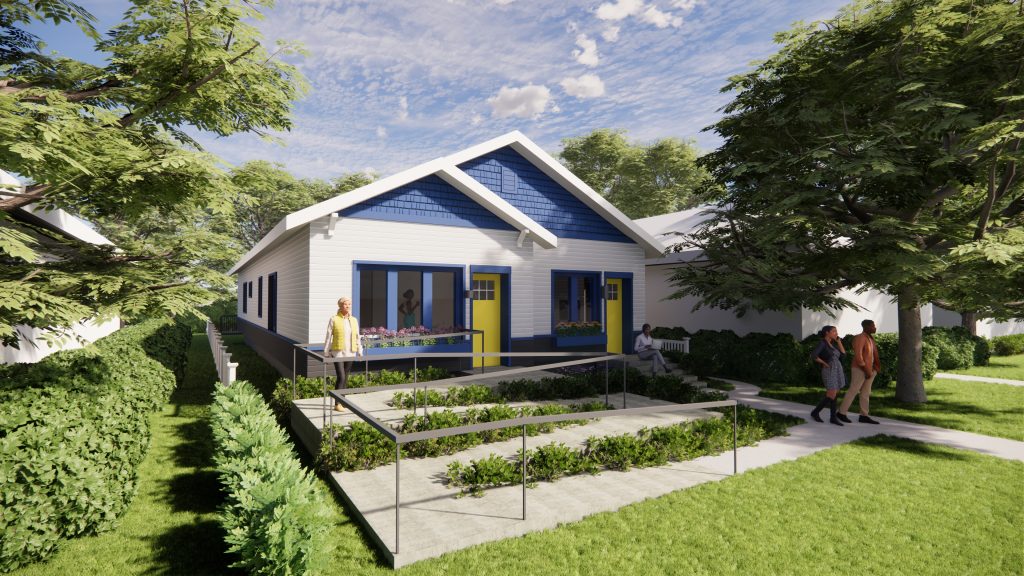
The Family Housing Fund offers free duplex designs. Pictured is the City Bungalow, a design that joins a one-bedroom home with an accessible two-bedroom, complete with a ramp. Photo courtesy of Family Housing Fund
In 1999, Scott Pruett had a bad fall while downhill skiing in college. Landing on his head, he broke his neck and permanently damaged his spinal cord, resulting in paralysis. After three months of rehabilitation, Pruett, a newly minted wheelchair user, was ready to go home.
But his home could no longer accommodate him. “Typically, when someone leaves the hospital to return home, they feel a sense of relief,” Pruett says. “But the home I grew up in wasn’t usable by someone with paralysis. I couldn’t get in the front door with a wheelchair, much less access the bedrooms and bathrooms on the top floor.”
Even though renovations were already underway when it was time for him to come home, the several-month project wasn’t yet complete. In the meantime, the best option for Pruett was to move into a hotel with his mom there to help. “Money was tight, and compromises had to be made. There simply weren’t any other suitable housing options that would immediately meet my needs,” he says.
This unexpected necessity of having to suddenly retrofit a home—and find interim solutions while those modifications take place—is a reality for many of the roughly 2 million Americans who are left with permanent injuries from car accidents each year, the 795,000 Americans who suffer a stroke each year, and the country’s growing aging population. It’s also a reality that makes moving to another neighborhood or city a formidable task for the 26 percent of American adults who are already living with a disability. Further, it’s estimated that by 2030, roughly 73.1 million Americans will be of retirement age. By 2050, that number will balloon to approximately 85.7 million.
People with disabilities and the elderly are the two groups most likely to need home retrofits. They are also the most likely to struggle with the cost. In 2019, the median earnings of full-time workers aged 18 to 64 with disabilities was $39,297. In 2021, the median income of fully retired Americans aged 65 and older was $22,056.
The cost of retrofitting a home to meet aging or disability needs is highly variable, depending on everything from the specific disability and its severity to the home itself—when and how it was constructed and where it’s located. Because of the lack of conformity across locations and needs, it’s difficult to determine the average cost of an accessible home rehab, but there are some estimations. Better Homes and Gardens puts the cost of creating a bathroom compliant with Americans with Disabilities Act (ADA) standards at between $25,000 and $50,000. As of April, HomeAdvisor pulls a $4,674 average cost for modifying a home to make it accessible from a range that’s as low as $130 and as high as $19,000.
For someone who is looking to age in place, and has a home that’s otherwise accessible, investing a couple hundred dollars in strategically placed grab bars could be all that’s needed—if the bathroom’s walls have been built with the ability to withstand the force. If not, and wall modification is required, the cost can climb quickly. For someone with visual impairments, new paint that helps to increase the contrast in the colors of different surfaces between, say, countertops and sinks can go a long way for little money. But for those with mobility issues or those who need the infrastructure that allows for professional help, a modification like reconfiguring a bathroom to provide adequate space for assistance around a toilet and replacing a tub with a no-step shower can quickly ascend well into the five-figure range.
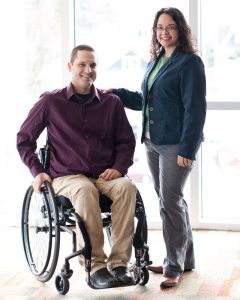
Scott and Sara Pruett. Scott is the executive director of The Universal Design Project. Photo courtesy of The Universal Design Project
The unaffordability of home modifications, from grab bars and no-step showers in bathrooms to entrance ramps, for both disabled and elderly populations—like the topics of disability and aging themselves—is a subject that’s rarely broached in the United States. In fact, the specific instances and costs of aging or disability-related home modifications aren’t even something that’s tracked. “That data just doesn’t exist,” explains Pruett, who today is the executive director of The Universal Design Project, a nonprofit that works to improve the accessibility of homes. “Typically, when people are dealing with home modifications, they work with a consultant or a contractor. They pay a fee, the contractor does the work, and once the work is done it doesn’t get reported anywhere.”
The Laws Have Limitations
The ADA is a federal civil rights law passed in 1990 that’s intended to prohibit discrimination against people with disabilities. In conjunction with the Fair Housing Amendments Act of 1988, the ADA outlines accessibility requirements across the country. However, the reach of the two laws is substantially limited.
The laws require, for example, that multifamily dwellings with four or more units have certain adaptable features like accessible entrances and common public use areas, doorways wide enough to accommodate wheelchair use, and electrical outlets and light switches that can be reached by someone in a wheelchair. But these requirements don’t apply to private single-family homes. When it comes to rentals, many of which are exempt from accessibility laws, renters who make their own modifications are often required to return the space to its original condition before they vacate, doubling the hassle and cost. As with many laws, oversight and enforcement are often lacking.
“You know all those high-rise family buildings going up in downtown areas right now? [Our clients are] having us review them to make sure that the units are Fair Housing Act-compliant and making sure that everything else is ADA-compliant. There’s a lot of typical mistakes that we catch. Architects just don’t understand [the laws],” explains Susan Berry, an ADA and accessibility architectural consultant based in Florida. Despite the laws having passed decades ago, “here we are in 2023 and I’m reviewing plans and [architects] are forgetting to do half the things they’re supposed to,” Berry adds.
Plus, many of the homes that Americans are living in were constructed long before the laws were enacted. As of 2019, the median age of owner-occupied housing stock in the U.S. was 39 years. In certain states like Massachusetts and Rhode Island, the median ages are much higher, at 56 years and 55 years, respectively. This means that the majority of Americans who own their homes, including dwellings like condos and duplexes, are living in structures that were built long before accessibility laws were passed. Multifamily homes that were built before 1991 aren’t required to make modifications to comply with the Fair Housing Act. Thus, it’s estimated that as of 2011, less than 4 percent of U.S. homes had no-step entries, single-floor layouts, and doors and halls wide enough for wheelchair use. So, when a medical event radically changes someone’s ability to live in their home or when the challenge of aging in place presents itself, retrofits become the only option for staying at home.
Good Design, Even in Retrofits
Not only are projects like these the key to keeping people in their homes as long as they’re safely able to do so, but they lessen the burden on tangential health care services as well. “Research has really shown us that good housing design that fits the needs of the residents increases someone’s independence and reduces their reliance on informal supports and on professional care,” explains Samara Scheckler, a research associate at Harvard’s Joint Center for Housing Studies. “For example, if I can’t access my laundry in the basement, I have to rely on somebody else to help me do my laundry even if I’m perfectly capable of doing my laundry except for navigating the stairs.”
The issue with accessible retrofits—and trying to arrive at average costs—is that they’re an after-the-fact solution to hyper-individualized needs. The needs of someone with vision or hearing impairments are far different than the needs of someone with mobility challenges. Location is also a factor. As Pruett explains, “if somebody is based in a very hilly region where homes often have multiple levels and entrances compared to, say, the desert of Arizona where homes are typically built on a concrete slab,” what’s needed to make a home accessible (and the associated cost) is going to vary greatly.
“I just did a multimillion-dollar mansion for a man who was permanently in a mobility chair,” Berry says. “He’s on the waterfront of a bay, so his living space was on the second level. He didn’t want to worry about using an elevator if there was a power outage, so we completely designed a 12-foot-high ramp that went through his landscaping to look beautiful and not look like a ramp at all.”
But for everyone else without personal wealth at their disposal, like seniors on a fixed income, finding even a couple hundred dollars to install grab bars can be a challenge. As with many other social services, there are limited resources available to those in the most dire financial situations, but even less is available to those in the large middle group of people who aren’t in the lowest income bracket but are far from able to finance a home remodel themselves.
Since 1948, the U.S. Department of Veterans Affairs (VA) has offered grants to veterans with service-related disabilities. Through the Specially Adapted Housing Grant program, the VA can make grants of up to $109,986 to assist with or cover the costs of constructing an accessible home or modifying an existing home. “We’ve delivered almost 50,000 grants totaling almost $2 billion at this point,” says Jason Latona, chief for the Specially Adapted Housing program.
Massachusetts’s Home Modification Loan Program provides zero-interest loans ranging from $1,000 to $50,000 to assist with the costs of home accessibility modifications. Since its founding in 1999, the program has assisted roughly 3,000 households.
Based in Tennessee, the Coalition for Home Repair is a nonprofit organization working to promote “safe, healthy, affordable housing for all” via home repairs and rehabs through funding, advocacy, and education efforts. While the organization is focused on rehabs and repair as a solution to the housing affordability crisis more broadly, its work often intersects with the needs of people with disabilities and the elderly.
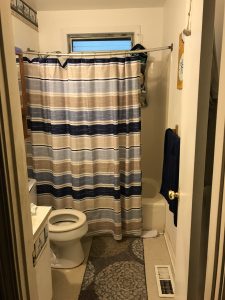
A bathroom before alterations were done to make it accessible. Photo courtesy of Rebuild Upstate
The majority of the group’s more than 100 coalition members are community-based nonprofits that run largely on the efforts of volunteers. Thanks to their labor model, the coalition’s average spend on a repair is around $10,000, explains Becca Davis, the coalition’s executive adviser. “That can be anything from replacing a roof to building a ramp. It really varies based on the particular home,” she says. The problem, though, is that the need far exceeds the organization’s ability to address it: “most of our members help about one out of every 10 clients who apply for their help,” she says. Jeff Kristenson, the executive director for HopeBUILDERS Home Repair, a coalition member in Kansas, adds that “we have about 145 people that are in queue right now on our backlist that we still need to tackle.”
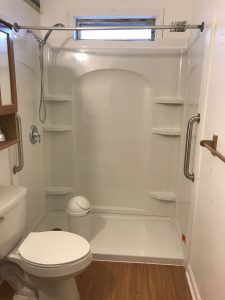
The same bathroom after a renovation by Rebuild Upstate, a member of the Coalition for Home Repair. Photo courtesy of Rebuild Upstate
Other groups have taken a different approach to making accessible retrofits more affordable. In October, the Minneapolis-based Family Housing Fund, a nonprofit aiming to make housing more accessible to all, released three sets of free duplex construction plans designed to fit on an average Twin Cities lot. One of the designs features an ADA-accessible two-bedroom. The goal of the designs, in part, is to increase small multifamily buildings that are affordable and accessible, something that’s “underrepresented in our existing housing stock,” says Jordan Backstrom, program officer for the Family Housing Fund. “It’s focusing on new construction to boost even a small proportion of accessible housing” while helping to reduce costs associated with architectural fees, he says.
Despite the financial assistance of government and nonprofit entities, there’s still a long way to go to make rehabs and retrofits truly attainable. Scheckler, of the Joint Center for Housing Studies, explains that many of these programs and services require documentation of an existing disability to qualify for assistance. This all but eliminates the ability of anyone without cash on hand to make their home either preemptively accessible for future aging needs or visitable by aging family members or others with disabilities.
Pruett puts it this way: “When you zoom out and look at the big picture of things, based on the median age of homes in this country, we’ll still be living in the homes that are being built today in 2063.” Pruett believes we should make homes as accessible as possible now.
Davis also sees the issue of affordable accessibility in a broader context. “A study out of the North Carolina Housing Finance Agency showed that for every $1 you spend on home repairs, you can save up to $19 on Medicare and Medicaid costs,” she says. “That’s because of how much more it costs for someone to be institutionalized. [Repairs and retrofits] are beneficial to the client, but it’s also beneficial to the community as well. It’s not just for older adults and people with disabilities. It’s what’s best for all of us.”
|
Help keep us strong by becoming a Shelterforce supporter. |

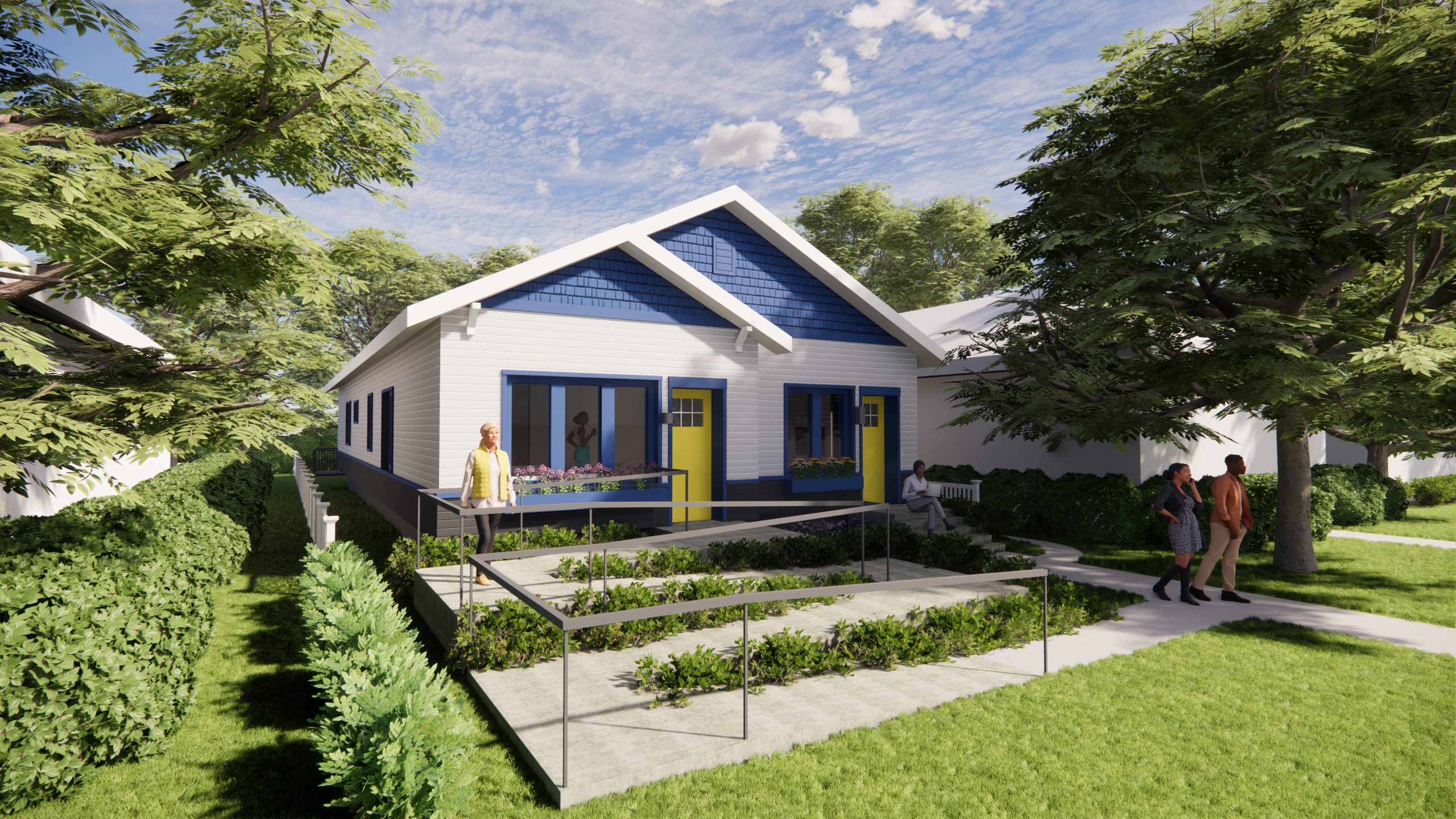
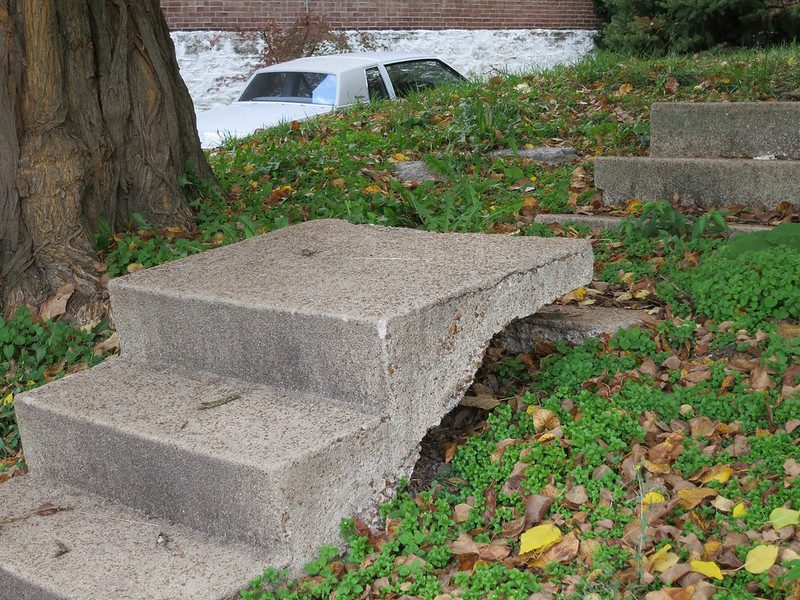
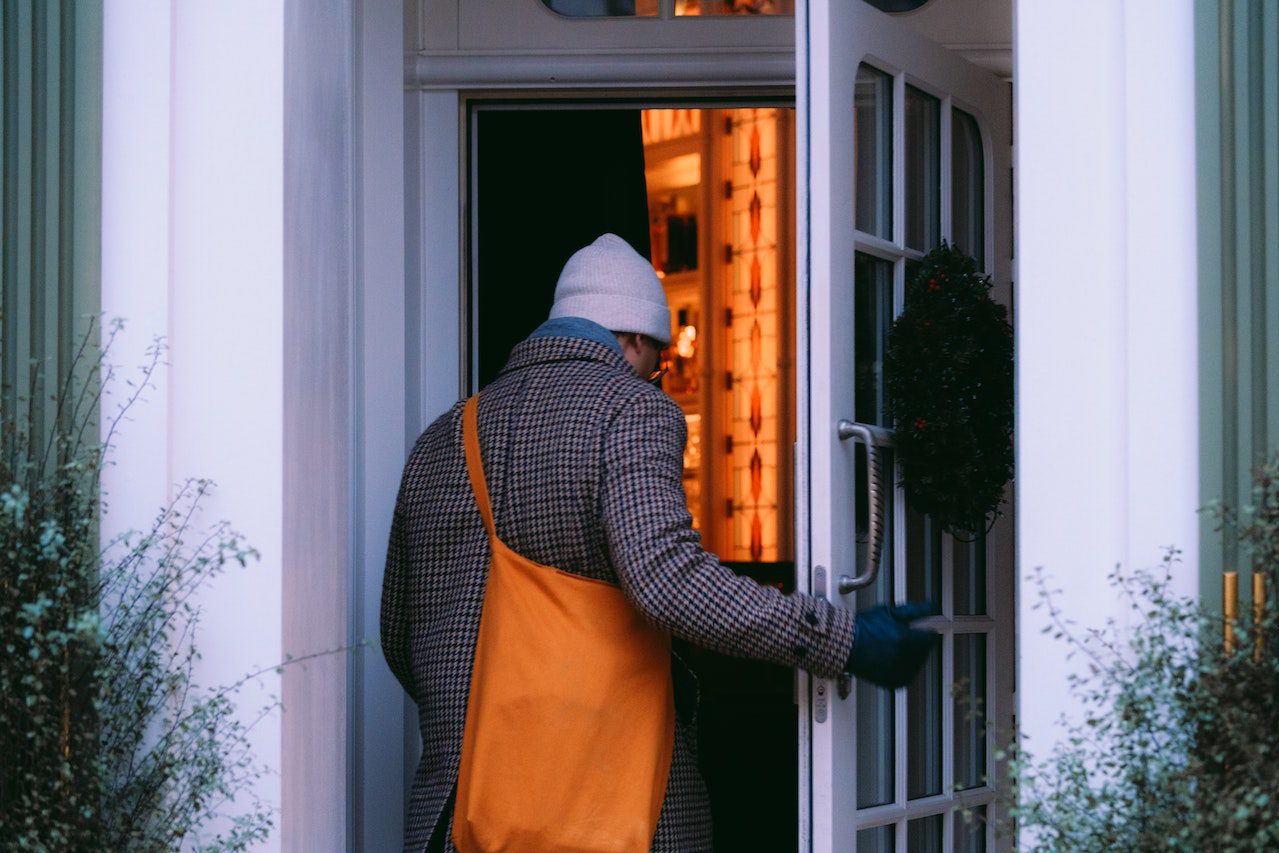
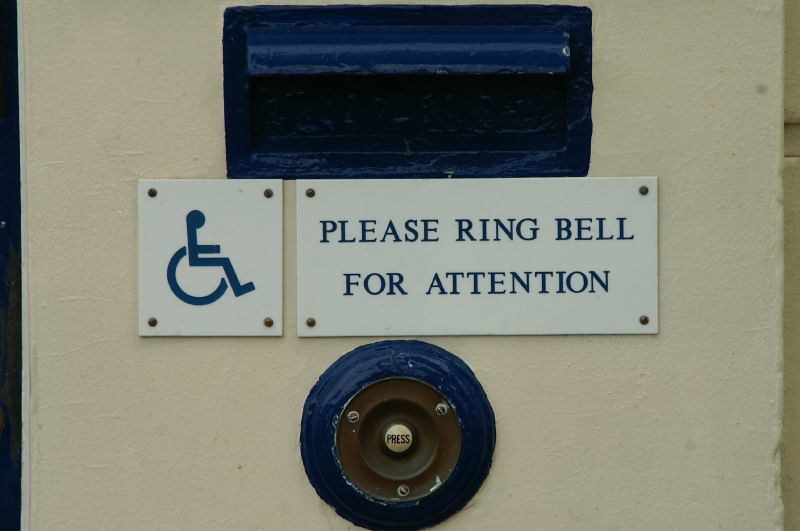
Cinnamon – I wanted to let you know about Rebuilding Together, a national nonprofit focused on home repairs, targeting significant safety and health hazards, at no charge to the homeowner. The Safe at Home program provides no-cost preventive home modifications to people with mobility issues and other disabilities to improve accessibility, reduce falls, increase independence and facilitate aging-in place. Through a network of over 100 affiliates across the country, we provide repairs to 10,000+ homes each year.